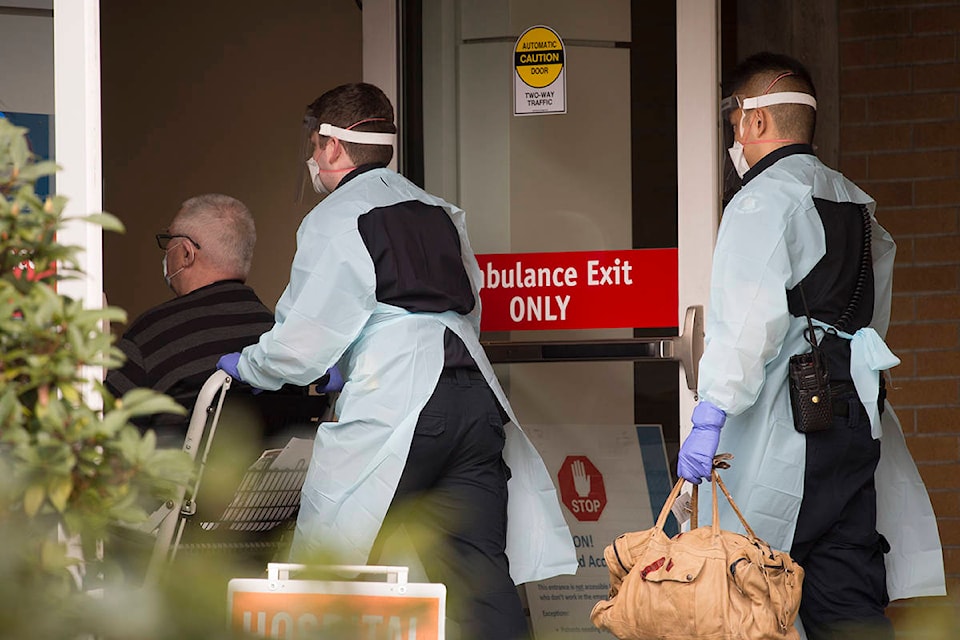Scientists who track the growth of pandemics say some figures provided by public health officials tell more about the spread of the novel coronavirus than others.
Daniel Coombs says the number of people admitted to hospitals tells him where COVID-19 stands in a community, a province or across the entire country.
The mathematics professor at the University of British Columbia’s institute of applied mathematics said those numbers best indicate the daily status of COVID-19.
The number of new positive tests and reports of how many people have recovered are less important, said Coombs, who has also conducted research on overdose prevention efforts during B.C.’s ongoing illicit opioid overdose epidemic.
“Of all the statistics being reported, I would probably put the least weight on the recovery rate,” he said in a recent interview. “It’s nice information. The numbers I’m really paying attention to at the moment are the numbers of people in hospital, and the number of people in intensive care units and the numbers of deaths.”
He said those in hospital are a definitive count of patients who have contracted COVID-19, adding that the numbers associated with testing are not as firm because there are more variables involved.
Prof. Junling Ma of the University of Victoria’s department of mathematics and statistics said providing the recovery rate figures would likely be viewed by the public as comforting, but scientists are looking at different data.
Ma, who studies the spread of infectious diseases in populations, said the daily toll of new cases provide information, but it’s dated.
“The numbers right now are not quite related to today’s new cases,” said Ma, adding the daily case updates are from people who were infected two weeks ago.
Ontario public health officials reported Monday a total of 4,347 cases and added 13 deaths for a total of 132. There were 589 people in hospital.
Quebec had 8,580 confirmed cases, 121 deaths and 533 in hospital.
B.C. had 1,266 confirmed cases with 140 people in hospital and 39 deaths.
READ MORE: Recovery rate tops 60% but B.C. records death of man in his 40s due to COVID-19
Two dozen people have died in Alberta, which has 1,348 confirmed cases.
Overall, Canada had 16,666 reported COVID-19 cases on Monday, with just over 3,600 cases listed as resolved.
Ma and Coombs said the figure for people listed as being infected with COVID-19 isn’t as helpful as some other numbers because not everybody is being tested. But hospitalization data provides actual head counts, they said.
In recent days, those receiving hospital care in B.C. has not spiked, indicating the province’s self-isolation and physical distancing measures may be slowing the spread of COVID-19, Coombs said.
“What we’re afraid of is seeing exponential growth of anything related to the disease in the province,” he said. “I feel like the hospitalization and ICU number is very important information and may be overlooked by everybody focusing on the number of new cases.”
Dr. Bonnie Henry, British Columbia’s provincial health officer, credited good fortune and lessons learned from other provinces for early restrictive measures that appear to have helped slow the spread of COVID-19 in the community.
B.C. learned from Quebec and Ontario, where spring break began two weeks earlier and travellers unknowingly brought back the disease with them, she said.
“A lot of the work we did early on this,” Henry added. “Part of it was the system that we had in place to detect cases in our communities, part of it was luck, and I believe part of it was timing.”
Dirk Meissner, The Canadian Press
Like us on Facebook and follow us on Twitter.
